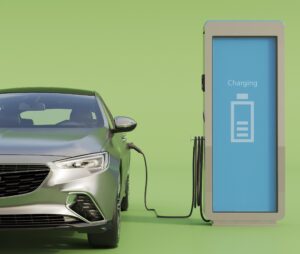Written by Riki Argyropoulou, junior surveyor at Wattcrop.
The world is at a pivotal moment in its efforts to combat climate change and reduce carbon emissions. One of the key strategies in this battle is the transition to green energy sources, with electric vehicles (EVs) emerging as a vital component of the sustainable future. As governments, industries, and individuals increasingly adopt EVs, the demand for efficient and widespread charging infrastructure becomes paramount. This is where Geographic Information Systems (GIS) technology steps in, playing a pivotal role in planning, optimizing, and expanding the electric vehicle charging network.
Mapping the Path to Sustainable Mobility
GIS technology provides a spatial framework for planning and deploying EV charging infrastructure in a way that maximizes efficiency and accessibility. By incorporating layers of data such as population density, traffic patterns, existing charging stations, and potential future developments, GIS tools offer insights into where charging stations should be strategically located. This data-driven approach ensures that EV charging infrastructure is positioned in areas of high demand, minimizing range anxiety for EV users and encouraging greater adoption.
 Optimizing Charging Station Placement
Optimizing Charging Station Placement
One of the significant challenges in scaling up EV adoption is determining where to place charging stations to create a seamless and convenient charging experience. GIS solutions address this challenge by conducting spatial analyses that consider factors like proximity to major roadways, urban centers, workplaces, and residential areas. By identifying optimal locations for charging stations, GIS helps streamline the charging process and enhances the overall usability of EVs.
Balancing Load on the Grid
As the number of EVs on the road increases, so does the demand on the electrical grid. GIS technology aids in balancing this load by analyzing the existing electrical infrastructure and identifying areas where grid capacity can be reinforced to accommodate the charging needs of EVs. This proactive approach prevents overloading, reduces the risk of power outages, and ensures a smooth integration of EVs into the energy ecosystem.
Planning for the Future
GIS solutions are not only valuable for the present but also for predicting future charging infrastructure requirements. By considering urban development plans, transportation trends, and projected EV adoption rates, GIS tools can assist city planners and energy authorities in making informed decisions about the expansion of charging networks. This forward-looking approach avoids bottlenecks and ensures that the charging infrastructure can keep pace with the accelerating adoption of EVs.
Visualizing Public Accessibility
Accessibility is a crucial aspect of any charging network, especially in urban areas where space is limited. GIS technology aids in visualizing the accessibility of charging stations to different segments of the population, ensuring that charging infrastructure is inclusive and available to all. By analyzing demographic data and transportation patterns, GIS helps identify areas that may require additional charging stations to serve underserved communities.
Mitigating Environmental Impact
The green energy transition is not solely about reducing tailpipe emissions; it also involves minimizing the carbon footprint of the charging infrastructure itself. GIS plays a role in assessing the environmental impact of charging station locations. By factoring in variables such as renewable energy availability, air quality, and potential land-use conflicts, GIS helps guide the placement of charging stations to minimize negative environmental effects.
Public Engagement and Stakeholder Collaboration

The success of any infrastructure project, including EV charging networks, hinges on effective public engagement and stakeholder collaboration. GIS technology facilitates this by creating interactive maps and visualizations that can be shared with the public and stakeholders. This“ transparency fosters understanding, garners support, and encourages meaningful input in the planning and implementation processes.
In the race to a more sustainable and greener future, the electrification of transportation plays a pivotal role. As electric vehicles become increasingly integrated into our daily lives, the need for a robust and efficient charging infrastructure cannot be underestimated. GIS solutions offer a comprehensive and data-driven approach to planning, optimizing, and expanding EV charging networks. By leveraging the power of spatial analysis, GIS technology ensures that the transition to electric mobility is seamless, accessible, and environmentally responsible. As the journey towards a greener energy future accelerates, GIS stands as a vital tool in driving us forward on the path of sustainable transportation.

